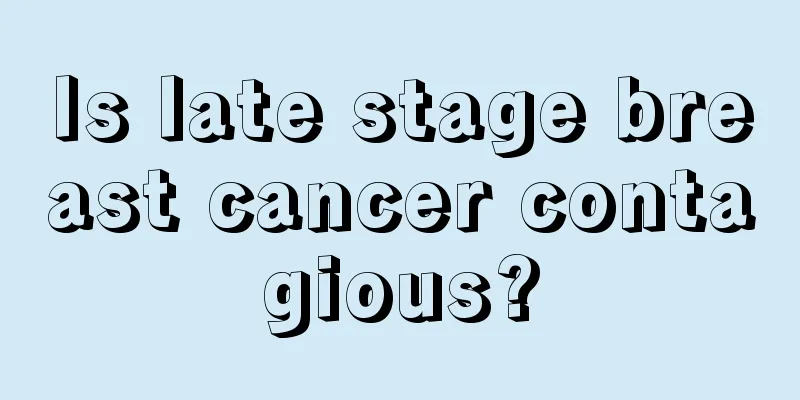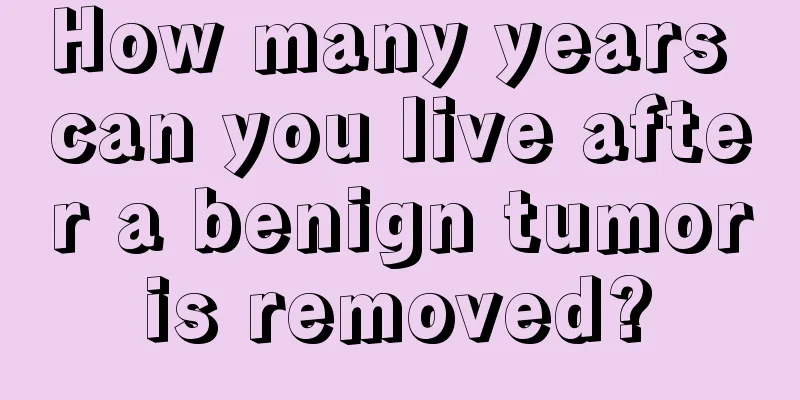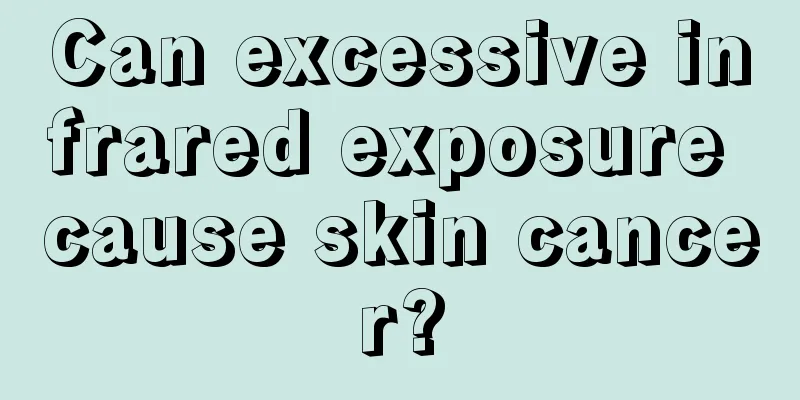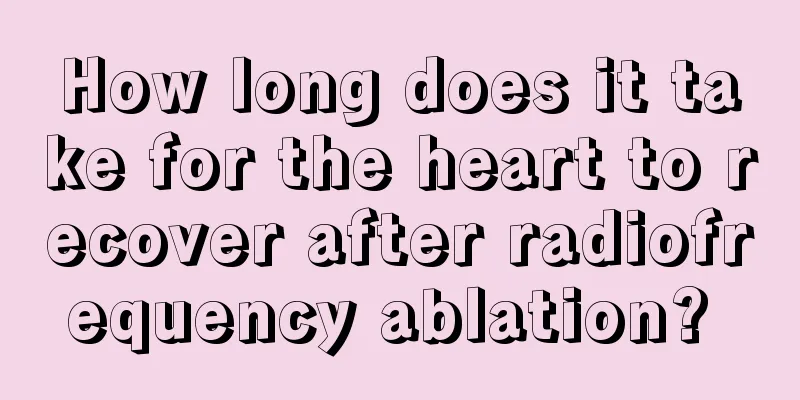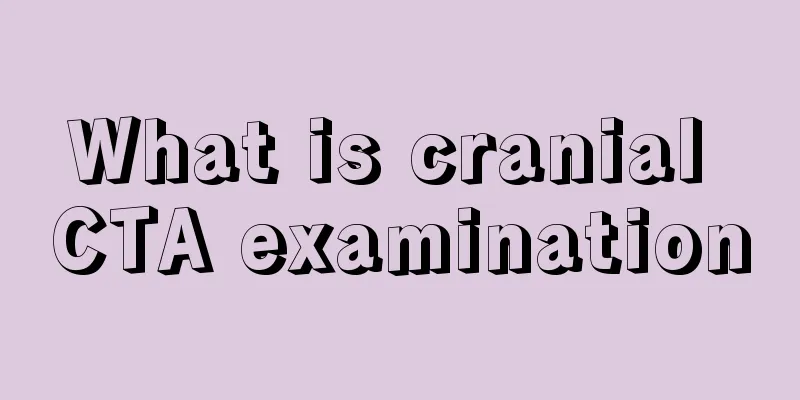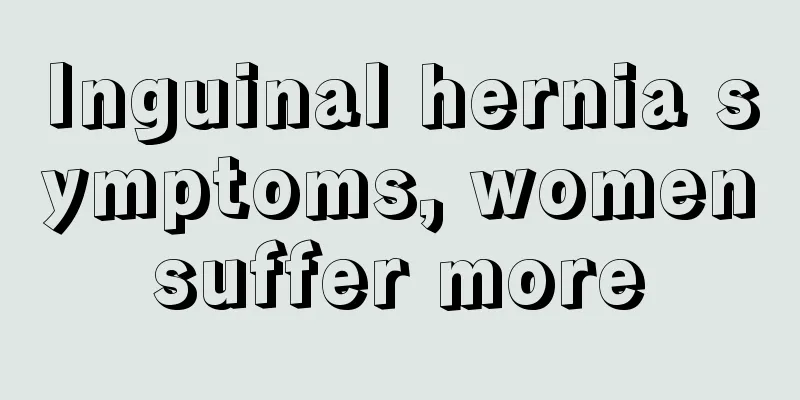What are the early symptoms of glioma? What is glioma?
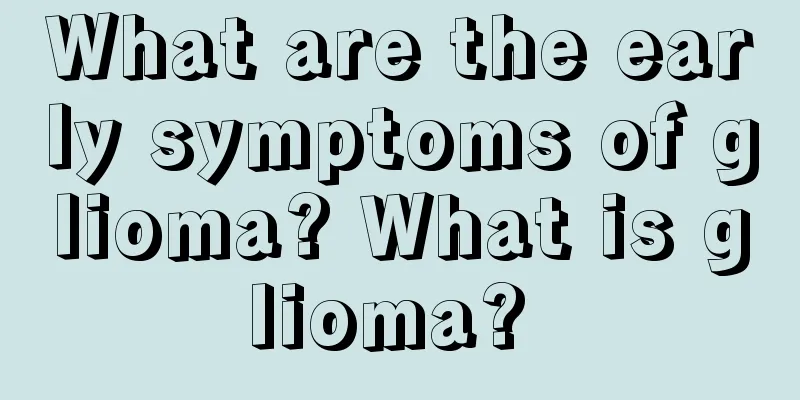
|
Tumors originate from interstitial cells, i.e., glial cells, ependymal cells, choroid plexus epithelial cells, and neural parenchymal cells, i.e., neurons. Most tumors originate from different types of glial cells, but based on their histological origins and similar biological characteristics, various tumors that occur in the neuroectoderm are generally referred to as gliomas. As the tumor gradually grows, it forms an intracranial space-occupying lesion, often accompanied by surrounding brain edema. When the compensation limit is exceeded, increased intracranial pressure occurs. 90% of glioma cases have symptoms of increased intracranial pressure, and the main clinical manifestations are headache, nausea, vomiting and visual impairment. Others may also include epilepsy, dizziness, abducens nerve paralysis, behavioral and personality changes, etc. The progression of its symptoms is related to the location of the tumor, the degree of malignancy, the growth rate and the age of the patient. 1. Astrocytoma is not highly malignant, grows slowly, and has a long course of disease. Symptoms appear earlier in patients with lesions located in the subtentorial area. The symptoms of focal lesions in different parts of the body are different, except for progressive chronic increased intracranial pressure, which is mainly treated with total surgical resection, supplemented by radiotherapy and chemotherapy, and brain herniation occurs in the late stage. 2. The clinical manifestations of astroblastoma (astrocytoma III) are similar to those of astrocytoma, but it develops faster, with an average course of about one and a half years. 3. Glioblastoma multiforme (astrocytoma IV) is highly malignant, grows fast, and has a short course of disease, with an average of 3 months. Some tumors develop with bleeding, and the symptoms of increased intracranial pressure are obvious. There are often epileptic seizures, prominent localized symptoms, and rapid development. Corresponding symptoms occur according to the location of the tumor. 4. Ependymoma occurs in the ependymal cells of the ventricular system and the glial epithelial cells underneath. It is more common in children and young people. It is located in the ventricles and can also extend into the brain substance. The tumor is large and occasionally multiple. The average course of the disease is one year. The course of the disease in the fourth ventricle is often shorter. It often presents with increased intracranial pressure such as headache and vomiting. 5. Medulloblastoma is a common type of brain tumor in childhood. It is mostly located in the cerebellar vermis, protruding into the fourth ventricle or filling the ventricle, forming obstructive hydrocephalus. There may be bleeding in the tumor. It presents with headache, vomiting, etc., and also with unstable gait and standing. 6. The clinical manifestations of oligodendroglioma are roughly the same as those of astrocytoma. 7. Pineoblastoma is more common in children or young people. It originates from the pineal gland and is located in the posterior part of the third ventricle. The clinical manifestations are characterized by progressive intracranial hypertension, precocious puberty, and premature development of sexual organs. Due to compression of the quadrigeminal body, it can cause upward vision disorders. Compression of the superior cerebellar peduncle can produce ataxia. 8. Choroid plexus papilloma is rare, and is more common in the fourth ventricle and lateral ventricle, and rarely in the third ventricle. The tumor is rich in blood vessels, red and papillary, similar to the choroid plexus, and a few are malignant. The clinical symptoms are mainly hydrocephalus, accompanied by mild localization signs, high cerebrospinal fluid protein content, and a few red blood cells. Glioma is a common and highly prevalent brain tumor (intracranial tumor). The cause of glioma is still unclear. The following eight factors may be related to glioma. 1. Origin of tumor: There is a theory that the cause of tumor is the growth of embryonic remnants of primitive cells into tumors. These remnant cells can cause chronic proliferation due to inflammatory stimulation and form tumors. Multiple gliomas, or glioma disease, may have more than one tumor. 2. Genetic factors: The results of various reports on the familial incidence of glioma are different. In the past 20 years, the chromosomes of gliomas have been studied and it has been found that most of them are abnormal in group C chromosomes, but the causal relationship with gliomas is still unclear. 3. Biochemical environment: The pigment oxidase, phosphokinase and ATP in glioma cells are lower than those in normal cells, but β-glucuronidase is higher than that in normal brain tissue. LDH is different from normal brain tissue due to the high metabolism of tumor tissue. 4. Ionizing radiation: Long-term exposure to radiation environments, such as Х rays, γ rays, nuclear radiation, etc., will increase the chance of developing brain gliomas. 5. Nitrosamine compounds: With the progress of industrialization, these compounds have been widely present in the environment we live in, especially in the process of food processing. 6. Polluted air: It has been confirmed that not only the workers who work in an air-polluted environment for a long time have a significantly increased chance of developing brain tumors (intracranial tumors), but also their children have a higher tumor incidence rate than other children. These occupations are mainly related to papermaking, milling, handicrafts, printing, chemicals, oil refining and metal smelting, mainly because there are a large number of hydrocarbon compounds in the air. 7. Bad living habits: such as partiality to certain types of food, drinking, smoking, etc., these factors certainly have not enough evidence to prove that they are related to the occurrence of gliomas, but they have been confirmed to be related to the occurrence of digestive tract tumors and lung tumors. 8. Infection: Some animal experiments have confirmed that certain infections can induce brain tumors (intracranial tumors), especially infections during pregnancy, which pose a greater threat to the future of the fetus. 1. Give equal importance to food and medicine. The treatment of tumors is a complex and long process. In the absence of effective means for its prevention and treatment, diet therapy, drug therapy, surgery and other therapies are all important components of comprehensive tumor treatment. None of them can be neglected. Many foods in diet therapy are part of medicines and have certain curative effects, but they cannot completely replace conventional tumor treatments such as drug therapy. Instead, comprehensive treatment should be actively carried out on the basis of improving the body's physique and immunity with the help of diet therapy. 2. Reasonable taboos. Taboos refer to the taboos on certain foods during the disease period. They are an important part of diet therapy and are of great significance for the treatment and rehabilitation of tumor patients. There is no conclusion yet on whether the "irritants" mentioned by traditional Chinese medicine, including chicken, fish, shrimp, and many meats, can definitely cause tumor recurrence, but these foods are important sources of life substances such as human protein. Therefore, it is generally believed that taboos should be scientific and reasonable, and should be tailored to the time, disease and person. For example, it is not advisable to eat more warm and dry foods in summer, and cold foods should be avoided in winter; patients with digestive tract tumors should have a light diet, and patients with lung cancer should avoid products that are dry, hot and hurt the yin. 3. Scientifically take tonic food. Foods with therapeutic effects, like medicines, have their own biases, with five flavors of sour, bitter, sweet, spicy, and salty, and four properties of cold, hot, warm, and cool. When taking food, you should also follow certain principles of dietary therapy according to your condition and constitution. Taking tonic food randomly will not only fail to cure the disease, but will also do more harm than good. Therefore, when taking dietary therapy, it is advisable to differentiate the symptoms and the disease and prescribe food according to the person, time, and place. The treatment of glioma is mainly surgical treatment, but due to the infiltrative growth of the tumor and the lack of obvious boundaries with the brain tissue, it is difficult to completely remove the tumor except for those with small early tumors located in appropriate locations. Comprehensive treatment is generally advocated, that is, radiotherapy, chemotherapy, etc. after surgery can delay recurrence and prolong survival. And we should strive to achieve early diagnosis and timely treatment to improve the treatment effect. In the late stage, not only is surgery difficult and dangerous, but there is often neurological loss. Especially for tumors with high malignancy, they often recur in a short period of time. 1. Surgical treatment: The principle is to remove the tumor as much as possible while preserving neurological function. For those with small early tumors, we should strive to completely remove the tumor. For shallow tumors, the cortex can be cut around the tumor, and for tumors in the white matter, the cortical incision should be made away from important functional areas. When separating the tumor, it should be kept at a certain distance from the tumor and performed in normal brain tissue, not close to the tumor. Especially for more benign tumors such as astrocytoma and oligodendroglioma in the frontal lobe or the anterior part of the temporal lobe or the cerebellar hemisphere, better therapeutic effects can be obtained. For larger tumors located in the frontal lobe or the front part of the temporal lobe, lobectomy can be performed to remove the tumor together. For those in the frontal lobe, the posterior edge of the incision should be at least 2 cm in front of the anterior central gyrus, and in the dominant hemisphere, the motor language center should be avoided. For those in the temporal lobe, the posterior edge should be in front of the inferior anastomotic vein, and avoid damaging the lateral fissure vessels. A few tumors located in the occipital lobe can also be lobectomized, but visual field hemianopsia will remain. If the frontal or temporal lobe tumor is too extensive to be completely removed, the tumor can be removed as much as possible while the frontal pole can be removed or internal decompression can be performed at the frontal pole, which can also prolong the recurrence time. Hemispherectomy can also be performed for tumors involving more than two lobes of the cerebral hemisphere and hemiplegia has occurred but has not invaded the basal ganglia, thalamus, and the contralateral side. For tumors located in the motor and speech areas without obvious hemiplegia or aphasia, attention should be paid to maintaining neurological function and appropriately removing the tumor to avoid serious sequelae. Temporalis muscle decompression or craniectomy can be performed at the same time. Decompression can also be performed only after biopsy. If the thalamic tumor compresses and blocks the third ventricle, a shunt can be performed, otherwise a decompression operation can be performed. For ventricular tumors, the brain tissue can be cut from non-important functional areas to enter the ventricles according to the location, and the tumor can be removed as much as possible to relieve ventricular obstruction. Care should be taken to avoid damaging the hypothalamus or brainstem adjacent to the tumor to prevent danger. In addition to small nodular or cystic brainstem tumors, which can be removed, shunts can be performed for those with increased intracranial pressure. Shunts can also be performed for those with difficult-to-remove upper vermis tumors. For patients with critical conditions, supratentorial tumors should be treated with dehydration drugs first, and at the same time, examinations and diagnosis should be performed as soon as possible, and then surgical treatment should be performed. Posterior cranial fossa tumors can first undergo ventricular drainage, and then surgical treatment can be performed after 2 to 3 days when the condition improves and stabilizes. 2. Radiotherapy: The radiation sources used for external irradiation include high-voltage x-ray therapy machines, 60Co therapy machines, electron accelerators, etc. The latter two are high-energy rays with strong penetration, low skin dose, small bone absorption, and little side scatter. The dose of the accelerator is concentrated in the expected deep part. Beyond this depth, the dose drops sharply, which can protect the normal brain tissue behind the lesion. Radiotherapy should be performed as soon as possible after the general condition recovers after surgery. The irradiation dose is generally 5000-6000cGy for gliomas, which is completed within 5-6 weeks. For those with high sensitivity to large-field radiotherapy, such as medulloblastoma, 4000-5000cGy can be given. The sensitivity of various types of gliomas to radiotherapy is different. It is generally believed that poorly differentiated tumors are higher than well-differentiated ones. Medulloblastoma is the most sensitive to radiotherapy, followed by ependymoblastoma. Multiforme glioblastoma is only moderately sensitive, and astrocytoma, oligodendroglioma, pinealocyte tumor, etc. are worse. For medulloblastoma and ependymoma, because they are easy to spread with cerebrospinal fluid, full spinal canal irradiation should be included. 3. Chemotherapy: Chemotherapy drugs with high lipid solubility and the ability to pass through the blood-brain barrier are suitable for brain gliomas. In astrocytoma grade III to IV, the blood-brain barrier is destroyed due to edema, allowing water-soluble macromolecular drugs to pass through, so some people think that the selection of drugs can be expanded to many water-soluble molecules. But in fact, in the area around the tumor where proliferating cells are dense, the destruction of the blood-brain barrier is not serious. Therefore, the drugs selected should still be mainly fat-soluble. The current preferred drugs are introduced as follows. 1. Podophyllotoxin: The chemical name is: 4'-demethyl-epipodophyllotoxin-β-methylpyrrolidone glucoside, the trade name is Vumon (teniposide, VM26), which is a semi-synthetic derivative of podophyllotoxin. The molecular weight is 656.7. It has a wide anti-tumor spectrum and is highly fat-soluble. It can pass through the blood-brain barrier. It is a cell staging drug that can destroy deoxyribonucleic acid and block G2 (late DNA synthesis) and M (mitosis). VM26 has the strongest toxicity to tumor cells, reaching 70% to 98%, while the lowest toxicity to normal cells is only 28% to 38%. The common dose of VM26 is 120-200 mg/m2 per day for adults, for 2-6 consecutive days. When used in combination with CCNU, the dosage can be reduced to 60 mg/m2 per day and added to 250 ml of 10% glucose solution for intravenous drip for about one and a half hours, for 2 consecutive days, followed by oral CCNU for 2 days on the 3rd and 4th days, for a total of 4 days as a course of treatment. Repeat a course of treatment every 6 weeks thereafter. Side effects: mild bone marrow suppression and low toxicity; cardiovascular reactions manifest as hypotension, so it is advisable to monitor blood pressure during intravenous drip. 2. Cyclohexylnitrosourea (CCNU): It has been used clinically for many years and is a cell cycle drug that acts on all stages of proliferating cells and also on the cell quiescent stage. It has strong lipid solubility and can pass through the blood-brain barrier. Therefore, it is selected for the treatment of malignant brain gliomas. The toxicity is large, mainly manifested as delayed bone marrow suppression and accumulation reaction, which significantly limits its application. After 4 to 5 courses of treatment, the white blood cells and platelets are significantly reduced, and the treatment is forced to be postponed or even interrupted, leading to relapse. In addition, the digestive tract reaction is also very serious, and the percentage of nausea, vomiting and abdominal pain after taking the medicine is very high. The liver and lungs are also affected. The commonly used dose is 100-130 mg/m2 per day for adults, taken for 1 to 2 days, and repeated every 4 to 6 days. At present, it can be reduced to 60 mg/m2 per day when used in combination with VM26. 3. MeCCNU: The dosage is 170-225 mg/m2. The administration method is the same as CCNU, but the toxicity is less. Chemotherapy for gliomas tends to be combined with drugs. According to the cell dynamics and the specificity of the drug to the cell cycle, two or more drugs, or even multiple drugs, are used in combination to improve the efficacy. Zhang Tianxi in Shanghai used teniposide-cyclohexyl nitrosourea sequential chemotherapy, which was effective and worth recommending. The method and steps are as follows: Each course of treatment lasts 4 days. Day 1 and 2: VM26 100 mg is added to 250 ml of 10% glucose solution and dripped for 1.5 to 2 hours, and then used for 2 consecutive days. Rapid drip or direct intravenous injection of VM26 will cause a sudden drop in blood pressure, so it is best not to use it. In addition, blood pressure should be observed during the intravenous drip to prevent accidents. If blood pressure drops below 10 kpa, the drug should be stopped immediately. Since VM26 is easily ineffective after being diluted at room temperature for more than 4 hours, it is advisable to prepare it for immediate use. Day 3 and 4: CC-NU 80 mg is taken orally every day. Antiemetics such as metoclopramide are given half an hour before taking the medicine to reduce gastrointestinal reactions. After a course of treatment, the next course of treatment is repeated every 6 weeks. Generally, the effect of CCNU reaches its peak in the fourth week after administration, so it is advisable to routinely check the white blood cell and platelet counts at the end of the fifth week. When the white blood cell count is lower than 3×109/L and the platelet count is lower than 90×109/L, chemotherapy should be postponed until the blood count recovers before starting the next course of treatment. Due to the cumulative toxicity of CCNU, it is usually difficult to maintain the blood picture after 4 to 5 courses of treatment, and the interval has to be postponed. Or VM26 can be used alone as a transition, and the two drugs can be resumed after the blood picture improves. During this period, supportive therapies such as DNA and shark liver alcohol can be routinely given. If the patient tolerates it well, it can be continued for 10 to 15 courses. There is no sign of recurrence after CT scan review. If the clinical manifestations are satisfactory, the drug can be stopped for follow-up. 4. Immunotherapy: Immunotherapy is still in the trial stage, and the efficacy is not certain and needs further research. 5. Other drug treatments: Hormone therapy can be given first for malignant gliomas, with dexamethasone being the best. In addition to reducing cerebral edema, it also has the effect of inhibiting the growth of tumor cells. It can relieve symptoms and then undergo surgical treatment. For patients with epileptic seizures, anti-epileptic drugs should be given before and after surgery. There is no relevant treatment for the current disease in traditional Chinese medicine for glioma. 1. Eat small meals frequently, less than 200 ml each time. The interval time is greater than 2 hours to prevent indigestion. 2. It is advisable to eat a high-calorie, high-protein, high-nutrition, low-salt diet. Prevent the retention of sodium ions in the body from causing blood pressure to rise, which in turn leads to increased intracranial pressure. Ensuring the patient's nutrition is conducive to the repair of tissues after surgery. 3. Soft meals are between ordinary meals and semi-liquid meals. They contain less food residues, are easy to chew and digest, but cannot be cooked by frying or pan-frying. 4. It is advisable to eat foods that fight gliomas, such as wheat, coix seeds, water chestnuts, jellyfish, asparagus, horseshoe crabs, kelp, etc. 5. It is advisable to eat foods that have the effect of protecting intracranial blood vessels, such as celery, shepherd's purse, chrysanthemum brain, wild rice stem, sunflower seeds, kelp, etc. 6. It is advisable to eat foods that have the effect of preventing and treating intracranial hypertension, such as corn silk, red beans, walnut kernels, seaweed, carp, duck meat, Ulva, kelp, crabs, and clams. 7. It is advisable to eat foods that can protect eyesight, such as chrysanthemum, amaranth, shepherd's purse, lamb liver, pork liver and other foods that help the body recover. 1. Avoid eating irritating foods, such as white wine, red wine, and chili peppers. 2. Avoid eating pickled foods, such as salted eggs, salted duck, and salted goose. 3. Avoid eating foods that are difficult to digest, such as snail meat, rice dumplings, and rice cakes. 4. In the early postoperative period when gastrointestinal function has not fully recovered, try to eat less gas-producing foods such as milk and sugar to prevent intestinal bloating. If brown liquid is extracted, it indicates bleeding in the digestive tract. Eating should be temporarily prohibited or ice fluid should be infused. Eating can be allowed only after the bleeding stops. |
>>: What are the early symptoms of gallbladder cancer? Can gallbladder cancer be cured?
Recommend
What is the reason for the hot instep
In winter, people always feel extreme cold and he...
How to wash denim clothes without fading
I usually don’t dare to wash the denim clothes I ...
How can I sweat
Everyone knows that when the human body sweats, t...
Let's count the early symptoms of prostate cancer patients
Prostate cancer is a very harmful disease that us...
I have small blood spots on my body recently
Sometimes we will find that there are many small ...
What are the therapeutic effects of the Pangao cervical vertebra treatment device?
According to relevant statistics, more and more p...
What are the symptoms of atrial fibrillation?
Atrial fibrillation occurs mostly because the pat...
Stomach pain in early pregnancy is like menstruation
Many women will experience mild abdominal pain wh...
What abnormal clinical symptoms do melanoma patients have?
Melanoma is a rare malignant tumor that mainly or...
What are the treatment options for thyroid cancer
What are the options for thyroid cancer treatment...
Can pancreatic function be restored
Most people only know that diabetes is a serious ...
Does drinking vinegar on an empty stomach hurt your stomach?
Vinegar is a very common condiment in cooking, an...
If your throat is congested and painful, try this method, it is very effective
After smoking, drinking and eating hotpot, I usua...
What gift do men want to receive most?
Men and women have different views on gifts, so t...
My eyes become red and painful when I wear contact lenses
Today we are going to talk about the situation wh...

